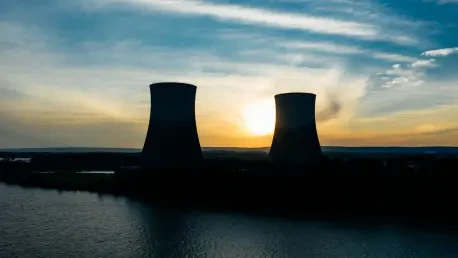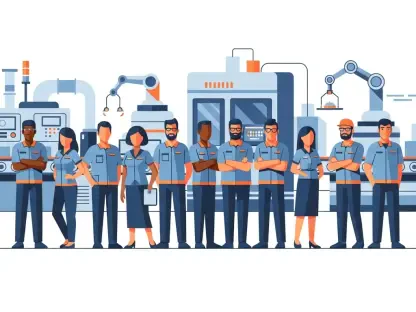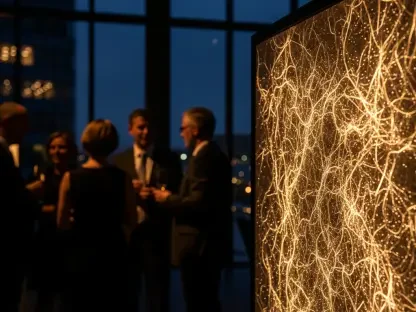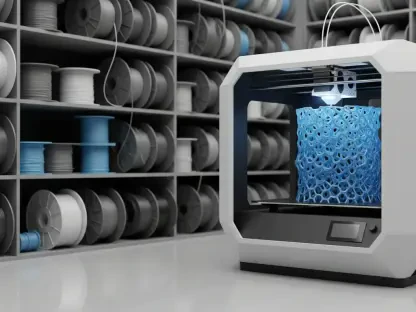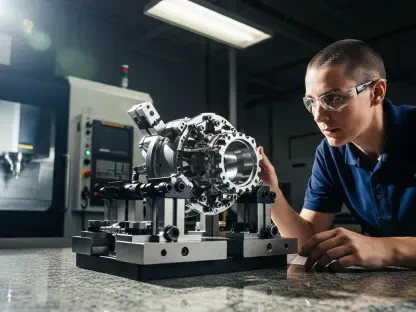The realm of nuclear technology has witnessed a monumental step forward with the Department of Energy’s Oak Ridge National Laboratory (ORNL) introducing an astounding innovation. This advancement was marked by the successful testing of two 3D-printed stainless steel capsules at ORNL’s High Flux Isotope Reactor (HFIR). As these capsules demonstrated their capacity to adhere to the stringent safety standards of nuclear applications, they hinted at a transformative approach to manufacturing reactor components. Crafted from 316H stainless steel, these capsules are specially designed to contain materials during irradiation experiments, ensuring the essential pressure containment and safety required in nuclear environments. This breakthrough underscores the potential of additive manufacturing in revolutionizing the process of creating reactor components, a method where items are produced directly through 3D printing. If this becomes standard practice, it could lead to significant efficiency gains and cost reductions in the production of critical nuclear parts. With this development, ORNL’s Manufacturing Demonstration Facility, led by Ryan Dehoff, sees the future of nuclear manufacturing as one that fosters rapid innovation by leveraging advanced technologies.
Technological Innovation Meets Nuclear Safety
The ability of the 3D-printed capsules to withstand a month-long exposure in the high neutron flux environment of HFIR stands as a testament to their durability and reliability. HFIR serves as a premier hub for testing materials that are crucial to reactor safety and performance, making it an ideal setting for evaluating the capabilities of these capsules. Traditionally, creating experimental capsules involves time-consuming and expensive custom fabrication processes. However, additive manufacturing, by comparison, offers a streamlined approach that not only reduces the necessary production time but also significantly cuts costs. This shift not only promotes financial savings but also allows for more innovative experiments, driving further advancements in nuclear science. The idea that these capsules maintained integrity after such rigorous testing conditions suggests that 3D printing could redefine the way in which components are qualified for nuclear applications. The DOE’s Advanced Materials and Manufacturing Technologies program backs this endeavor, signaling a broader movement towards embracing advanced manufacturing techniques in challenging reactor conditions.
Bridging Innovation with Practical Application
This advancement in 3D printing technology aligns with global efforts to transform manufacturing processes, particularly within complex sectors such as nuclear energy. Richard Howard from ORNL highlighted that the achievement broadens the toolkit necessary for developing novel nuclear experiments, underscoring the increasing importance of flexible and innovative manufacturing solutions. Supported by the DOE Office of Nuclear Energy, this initiative does not merely focus on technological enhancements but reflects a larger strategic objective to revolutionize U.S. manufacturing. By spearheading such cutting-edge projects, ORNL is actively addressing pressing scientific challenges and ultimately contributing to a more adaptive and efficient manufacturing landscape. The adoption of additive manufacturing in reactor component production stands to redefine industry standards, offering new paradigms for innovation and efficiency. As the nuclear sector faces evolving demands, such technological strides provide a framework for future developments, promising a new era where traditional methods are re-evaluated and optimized through modern means.
A Step Towards the Future
Nuclear technology has reached a significant milestone with the Department of Energy’s Oak Ridge National Laboratory (ORNL) unveiling an impressive innovation. This breakthrough is marked by the successful testing of two 3D-printed stainless steel capsules at ORNL’s High Flux Isotope Reactor (HFIR). These capsules, which passed rigorous safety standards crucial to nuclear applications, suggest a groundbreaking shift in how reactor components are manufactured. Made from 316H stainless steel, the capsules are specifically designed to safely contain materials during irradiation experiments, providing necessary pressure containment and ensuring safety in nuclear settings. This achievement highlights the promise of additive manufacturing, where components are crafted directly through 3D printing, potentially revolutionizing the creation of reactor parts. This approach could bring about considerable efficiency and cost savings in producing vital nuclear components. Ryan Dehoff, leading the Manufacturing Demonstration Facility at ORNL, envisions a future in nuclear manufacturing driven by rapid innovation and advanced technology.
